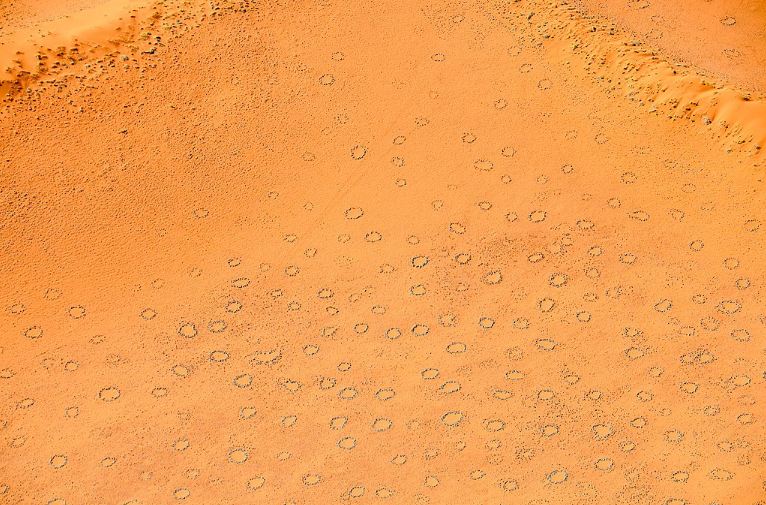According to the Himba people’s oral myths, the barren patches have been caused by the gods, spirits, and natural divinities. The region’s bushmen have traditionally attributed spiritual and magical powers to them. Himba people specifically believe that their original ancestor, Mukuru, culprits these fairy circles, referring they were the god’s footprints. Additionally, some tour guides promoted another myth- a dragon in the earth formed the rings, and its poisonous breath kills the vegetation.
Let’s find out the explanation by Science about the “Fairy Circles” in Africa.
Fairy Circles are circular patches varying between 2 and 15 meters in diameter of land barren of plants, often encircled by a stimulated grass growth ring. In 2014, the phenomenon was found out to only known in the arid grasslands of the Namib desert in western parts of Southern Africa, being particularly common in Namibia. In that same year, ecologists were notified of similar vegetation rings outside of Africa, in a part of the Pilbara in Western Australia.
Grasses found in the surrounding area of the circles came from the species in the genus Stipagrostis. Studies reveal that these circles pass through a life cycle of about 30 to 60 years. Once they have achieved a peak diameter of perhaps 15 meters (39 ft), they mature and “die” as they undergo invasion, mainly by the mentioned grass species.
Fairy circles have long been a puzzle with several investigations that have proved challenging. One popular theory assumes that the distinct vegetation patterns are a population-level consequence of competition for scarce water, as the plants “organize” themselves to maximize access to minimal resources. The barren circular patches capture water that eventually flows to the outer edges of the ring. Greater availability of water increases biomass and roots, which leads to the loosening of the soil. The less-dense soil allows more water to penetrate and feed the vegetation, creating a feedback loop supporting the plants at the edge of the circle.
What does Science say about it?
Researchers tried to debunk the origin of these fiercely debated circles in the Namib desert’s arid lands – but it now seems both leading explanations may be right.
Competition for water
One group claims the empty patches, known as fairy circles, were formed by termites under the soil that clear vegetation in the area around their nests. The porous soil can be explained by the fact that the termites establish permanent rainwater reservoirs 50 centimeters below the surface to sustain them and the surrounding ecosystem.
Another explanation is that plants compete for water. A plant helps its nearest neighbors by creating shade, maintaining water on the soil’s surface, and hindering those further away by growing long roots to extract water from the soil.
Corina Tarnita of Princeton University states that the water competition theory can explain the regular patterns neatly but hasn’t been proven in any test. Meanwhile, the termite theory is supported by observations of termite nests in the circles but couldn’t be further explained why they have very regular patterns.
Termite nests
Tarnita and her colleague Rob Pringle further investigated whether termites could end up with regular spacing between their nests. They found out that termites’ forage in a circular area around their nest, and when encountering a smaller termite colony, they destroy and take over the territory. However, two colonies of a similar size face-off, neither overcome the other when they establish a border.
The model shows that the competition between termite colonies can lead to a regular honeycomb pattern, with each colony surrounded by six neighboring colonies. According to Tarnita and Pringle, a similar pattern to fairy circles can be seen in termite colonies in Arizona, Brazil, Kenya, Mozambique, and Australia.
The two scientists then wondered what would happen if plant competition for water was also at work. Moreover, their model projected that the presence of two patterns: a large-scale pattern of bare circles, formed by termites, and a smaller pattern in the vegetation between the circles, resulting from competition for water.
Smaller circles
Besides the larger circular patches, the scientists saw smaller circles, about 20 centimeters in diameter and were about 20 centimeters apart. They hadn’t been reported before, as Tarnita said, that people have drawn so much attention to the fairy circles and haven’t seen how the vegetation looks between the circles.
Furthermore, their observations have matched the model’s prediction, suggesting that the two mechanisms are acting simultaneously.


